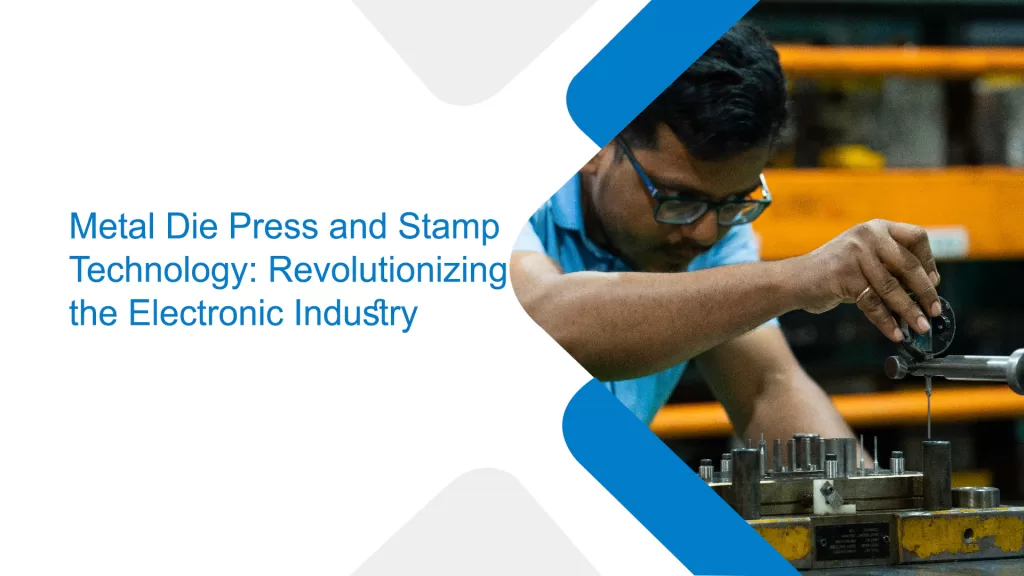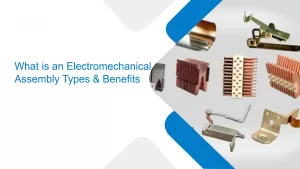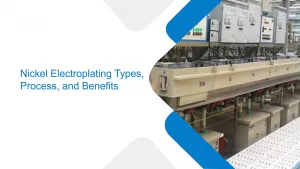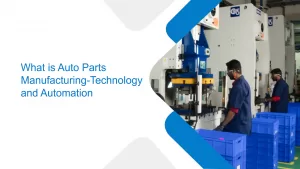Metal Die Press and Stamp Technology: Revolutionizing the Electronic Industry
- Metal Stamping |
- Nov 19, 2024

Electronics is one of the most dynamic and quick-paced industries, fueled by ongoing innovation demands and quick technical advancements. How the complex components of electronic gadgets are made is one of the key factors driving the electronics revolution.
Although metal die press and stamping technology originated in electronics manufacturing, it has evolved to satisfy the demanding requirements of the electronics sector. Let’s discuss it in detail:
Technology for Stamping and Metal Die Pressing:
The production process of metal stamping uses a press machine and dies to mold flat metal sheets into predetermined shapes. The procedure passes a metal sheet into a stamping press, where dies exert regulated pressure from the metal. Metal die pressing improves process accuracy and consistency by reproducing intricate, high-tolerance parts.
Metal stamping is crucial in electronics manufacturing for producing parts such as enclosures, brackets, connections, terminals, and shielding components. These parts must be consistent during mass manufacturing runs, have strict tolerances, and be precise.
Role of Stamping in Electronic Industry
Accuracy
In electronics, the ability to produce extremely accurate components with tight tolerances is one of the biggest benefits of metal stamping. Die press in electronics enables producers to create intricately designed pieces as thin as a few millimeters, which would be impossible or difficult to accomplish with other production techniques.
In the manufacturing of smartphones, little metal shields and connectors are stamped to fit into the small, closely spaced internal components. These parts must fulfill certain requirements to guarantee that the gadget operates accurately and consistently.
Rapidity and Expandability
In a business of rapid innovation and strong demand, metal stamping technology offers precision, extraordinary speed, and scalability. The electronics manufacturing sector requires ever-increasing manufacturing quantities, which can be met by stamping presses to create thousands of pieces per minute.
Manufacturers can keep up with the rapid advancement of consumer electronics, where a product’s time to market can determine its success due to this high throughput capability. Metal die press technology’s scalability facilitates the production of components in both small and large volumes.
Innovative Stamping Technologies
The technology for stamping is evolving along with the electronics sector. Several developments are expanding the capabilities of metal die presses and stamping, further transforming the electronics manufacturing sector.
Progressive Die Stamping
Combining several stamping processes into one press cycle is known as progressive die stamping, and it is a very effective method. Each station that the sheet metal passes through the press does a distinct task, including punching, bending, or cutting.
Since there is no need for additional stamping procedures, the die press in electronics dramatically cuts production time and expenses. Complex items with several characteristics, like metal housings with built-in vents or connectors with multiple terminals, are particularly well-suited for progressive die stamping.
Small-scale Stamping
A specialized type of metal stamping called microstamping is used to create incredibly tiny, intricate pieces. This technology is essential for sectors like electronics, where components are constantly getting smaller.
Micro-stamped parts are crucial for gadgets like smartphones, medical implants, and microelectromechanical systems, where even the smallest variation in size or shape can affect functionality.
Several Slides for Stamping
Multi-slide die press in electronics is a sophisticated method that uses multiple tools to form intricate pieces with several bends, cuts, and angles. Because of its great efficiency and adaptability, this technology enables manufacturers to create parts with complex designs that would be challenging to accomplish with conventional stamping techniques.
Multi-slide stamping is very helpful in the electronics industry for producing parts like fasteners, clamps, and connectors, which frequently call for intricate geometries and precise tolerances.
Uses of Advanced Metal Stamping Methods
Automotive Industry
Advanced metal stamping processes are commonly employed in the automotive industry to make structural, bracket, and engine parts. Small and medium-sized parts are frequently mass-produced in huge quantities using precision progressive stamping.
The Aerospace Sector
The compound die precision tool is helpful in the aerospace sector for complex and lightweight items like brackets, flanges, and interior components. Fine blanking creates precision gears, sprockets, and other high-tolerance components.
Electrical and Electronics Sector
Microstamping is essential to produce tiny electronic parts like connections, sensors, and semiconductors in electronics manufacturing. Precise electrical connections and connectors are made by fine blanking.
Medical Equipment
Microstamping procedures are essential to ensure accuracy and superior quality in the manufacturing of vital components for medical devices. Large amounts of medical components, such as implants and surgical equipment, are produced via progressive stamping.
Winding It Up:
Eigen offers a top-quality metal die press and stamping technology. They offer the best metal die for electronics manufacturing services. Keeping up with metal pressing technology will help you differentiate yourself in a crowded market. We are excellent at progressive die stamping since we have a top-notch progressive tooling die and tool shop. Make use of our service for a successful project.
Ujjwal handles crucial roles like AGM Marketing, researcher, and is an author for KDDL – Eigen. He currently works with Eigen for implementing proven techniques and strategies for marketing plans on online and offline platforms. An expert in efficiently executing SEO, SEM, email marketing, social media marketing, PR marketing, Print campaigns, etc. Ujjwal has coordinated an efficient marketing team on various creative campaigns and programmatic buying to support various digital cross-promotion efforts. Implement efficient search optimization strategies with the help of collateral material and metrics.
In his former years, Ujjwal has years of experience in a managerial role for several reputed companies. His years of experience combined with the flair of writing help him come up with result oriented strategies for Eigen.




